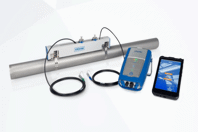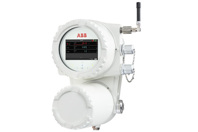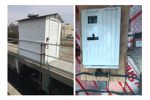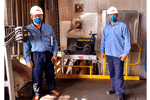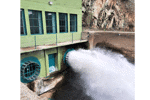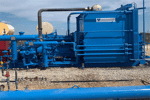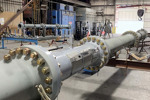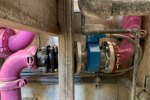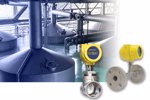Well Completion
PRODUCTS
-
Learn about KROHNE's ultrasonic clamp-on flowmeter for temporary flow measurement of liquids.
-
When using Seeq, teams can easily create automated SPC control charts which can empower data driven decisions.
-
Workbench, Organizer, and Data Lab are powered by Cortex, which enables Seeq calculations at scale, data connectivity, and administration features.
-
ABB’s Sensi+ analyzer offers a reliable new solution which simplifies and reduces the cost of pipeline operation and maintenance. It enables safer, easier, and more efficient pipeline monitoring and operations through a single device that can analyze up to three contaminants (H2S, H2O, CO2) in any natural gas stream accurately and in real time. Its fast response also enables quick reaction to process upsets, thus helping to reduce waste and methane emissions.
-
GWT electrocoagulation (EC) technology has become a valuable solution in the treatment of water and wastewater due to its ability to remove contaminants that are generally more difficult to remove by filtration or chemical treatment systems, such as emulsified oil, silica, total petroleum hydrocarbons, refractory organics, suspended solids, and heavy metals.
WHITE PAPERS AND CASE STUDIES
-
Advances In Online Colorimetric Analyzer Technology
Recent technological developments now enable high-accuracy total phosphorus measurement in near real-time, on-line, that reliably matches lab results.
-
Damper Maintenance Made Easy: ABB's Actuators Minimize Customer Plant Shutdowns
When a customer’s plant stopped working unexpectedly, the ABB team in Brazil stepped up to the challenge.
-
Flow Measurement Of Reservoir Water With A Clamp-On Meter
Discover why clamp-on flow measurement provides a much more reliable and accurate reading compared to other methods.
-
5 Questions To Ask When Selecting An Advanced Analytics Solution
New advanced data analytics have a huge positive impact on the growing volumes of data in many sectors. Learn how to leverage these new analytics in process manufacturing.
-
End-Of-Life Total Flow Alarming System Takes Faulconer Energy To The Edge
FreeWave’s Edge platform with edge polling and alarming future-proofs systems, lowers costs and minimizes operational failures.
-
Not A Drop Of Oil Lost: How Modern Clamp-On Technology Contributes To A Reliable And Cost-Efficient Pipeline Management
Transporting crude oil and petroleum products through pipelines is currently the most efficient way to distribute these energy sources to their respective destinations. To protect the environment and against loss in value due to leakage or theft, systems for leakage detection are required. To ensure safe operation, pipeline management systems must be continuously adapted to the state of the art. Modern and improved ultrasonic clamp-on flow meters offer cost-effective options at this point.
-
Midwestern Utility Takes Data Collection From Manual To Automatic
Read how a publicly owned electric, gas, and water utility taps FreeWave Technologies for new connectivity and edge data collection solution, and achieves immediate, significant results.
-
Building The Digital Oilfield Of The future
Explore how technology is redefining oil field production and data communications.
-
Low CAPEX Network Upgrade
Read how a large independent oil and natural gas exploration and production company in Texas boosted production by replacing an existing network of radios.
-
Full-Bore, Unrestricted Mounting Flow Meter For Municipalities
Like all wastewater treatment facilities, the City of Pendleton WWTRRF faces the daily challenge of maintaining water safety and quality for the city while improving energy consumption and meeting city, state and national regulations. Endress+Hauser’s Promag W 0xDN electromagnetic flowmeter provides stable measurement solutions regardless of mounting locations.
-
Helping Breweries Cut Natural Gas Costs And Waste Gas Emissions
No matter whether consumers choose a pilsner, an ale, or another popular type of beer, there is a critical focus at nearly all breweries today on their production process energy (natural gas) costs and plant environmental compliance (waste gas emissions). Failing to pay attention to the efficiency of these processes at breweries or any other type of food and beverage processing plant can lead to cost competitiveness issues and hefty regulatory fines.
-
Meeting The Global Methane Pledge
Carbon emissions have long been the focus of global efforts to reduce the impact of industrial activities on the environment. In September 2021, the US and the EU proposed that the reduction of methane emissions into our atmosphere could have a significant and fast acting impact on the pace of global heating over the coming decades.
NEWS
-
Rhino Resources And Halliburton To Sign Contract For Integrated Deep-Water Services Offshore Namibia4/24/2024
Halliburton Company today announced it has been awarded a deep water integrated multi-well construction contract by Rhino Resources Ltd., a private company engaged in both onshore and offshore energy exploration in Africa.
-
Energy Workforce & Technology Council Testifies In Support Of U.S. Energy Production4/24/2024
Today, Energy Workforce & Technology Council President Tim Tarpley and EWTC Board Member Ron Gusek, President, Liberty Energy testified before the U.S. House of Representatives House Oversight Subcommittee on Economic Growth, Energy Policy, and Regulatory Affairs during the Field Hearing titled “Drilling Down: Oversight of the Challenges and Opportunities Facing the U.S. Energy Production.”
-
Trident Energy Enters The Republic Of Congo With Strategic Deal4/24/2024
Trident Energy announced today that it has signed an agreement with Chevron Corporation to acquire the entire issued share capital of Chevron Overseas (Congo) Limited which holds a 31.5% non-operated working interest in the Moho-Bilondo, Nkossa, Nsoko II fields and a 15.75% operated interest in the Lianzi field.
-
IPAA Statement On NPC Natural Gas Report4/23/2024
The Independent Petroleum Association of America (IPAA) released the following statement from President and CEO Jeff Eshelman on the new National Petroleum Council (NPC) report on reducing greenhouse gas emissions from the natural gas supply chain being presented today to Department of Energy Secretary Granholm.
-
Vår Energi Reports Record High Production And Strong First Quarter Results4/23/2024
Vår Energi ASA is on track for growth and value creation and delivers strong financial results in a quarter with record high production.
WELL COMPLETION ABOUT DOCUMENT
Well Completion
Well completion is a process that takes place after a oil or gas well has been verified to be commercially viable. Well completion involves casing, temperature and pressure evaluation and equipment installation to allow gas or oil drilling. Completion therefore has to wait for formation testing after a design well depth has been established. The specific activities involved in well completion include; drill stem tests (DST), production casting, production tubing installation, production flow commencement and installation of beam pumping units.
Drill stem tests have to be conducted to determine production formation potential. The DST experts use appropriate tools lowered into the bottom of the drilling hole to establish the formation potential. Adjustments are made to the tool to establish if the pressure is sufficient for production. This process should be left to the professional crew as hazards such as getting stuck by the test tool in floor testing. Exposure to h2s and other gases as well as blowouts are other hazards that only professional crews know how to deal with.
Production tubing installation is the other process involved in well completion. Small diameter tubing is more preferred to the larger ones in mining. Using couplings, individual tubing is joined to form a tubing string. The tubing that is to be used in mining is made using power tongs. With the advancement in technology, tubing can be made in the form of a continuous coil.
The final step in well completion is the initial production flow. Brine or water is injected into the well to remove the drilling fluid. This should be enough to initiate the flowing of the well. In the event that the well fails to flow under such circumstances, unloading or high pressure gas injection might be necessary. Caution should be taken since blowouts might occur if the well pressures happen to be charged.

